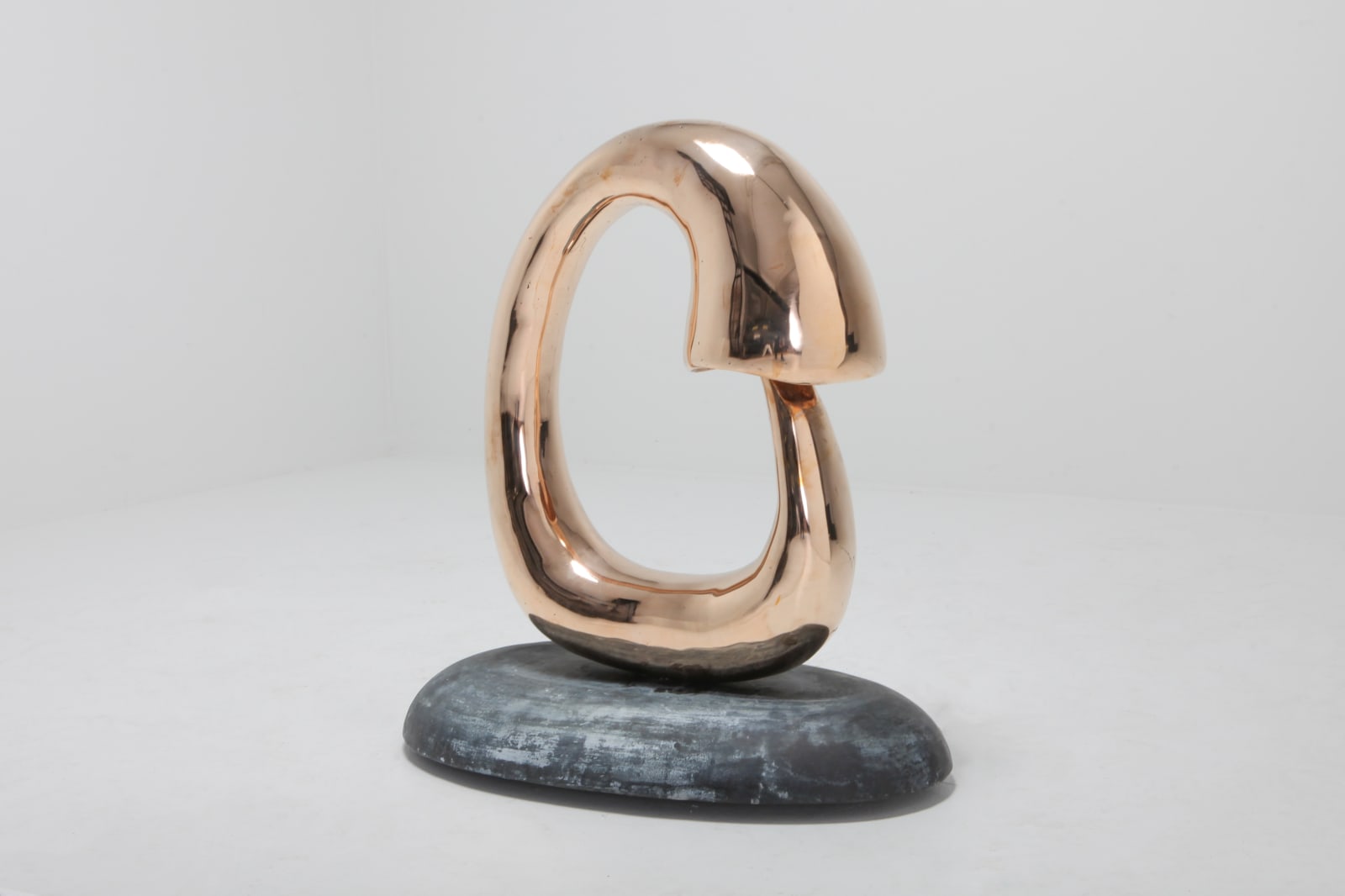
Carlo Lorenzetti American, b. 1990
angler, 2019
bronze
40 x 60 x 30
edition 8 + 2ap
Copyright The Artist
The title of this piece references the ‘anglerfish’ (the fish) and an ‘angler’ (the fisherman). The anglerfish is an ambush predator that lures prey into it’s mouth using an antenna...
The title of this piece references the ‘anglerfish’ (the fish) and an ‘angler’ (the fisherman). The anglerfish is an ambush predator that lures prey into it’s mouth using an antenna with a light on the end that glows brightly in the dark depths of the ocean. In vaguely similar fashion users of the ‘Angler’ lamp will find the switch located inside the interior of the piece where the light is emitting from. Secondly the piece is a reference to the Ouroboros, a symbol that can be found in the written histories of different ancient civilizations all over the world. I find it fascinating that cultures from all over the planet, that had no interaction or knowledge of one another, created the same symbol and ascribed significance to it. Most often the Ouroboros is depicted as a snake or dragon eating its own tail. Its symbolic and cultural value differs from one culture to another, however the Swiss psychologist and psychoanalyst Carl
Jung maintained that the unexplainable global proliferation the symbol was a result of its archetypical significance in the collective unconscious. This piece was made originally for a year long residency at Beeldenstorm, the casting foundry in Eindhoven. I worked closely with them in a co-creation format to realize this piece using the lost-wax casting technique.
Jung maintained that the unexplainable global proliferation the symbol was a result of its archetypical significance in the collective unconscious. This piece was made originally for a year long residency at Beeldenstorm, the casting foundry in Eindhoven. I worked closely with them in a co-creation format to realize this piece using the lost-wax casting technique.